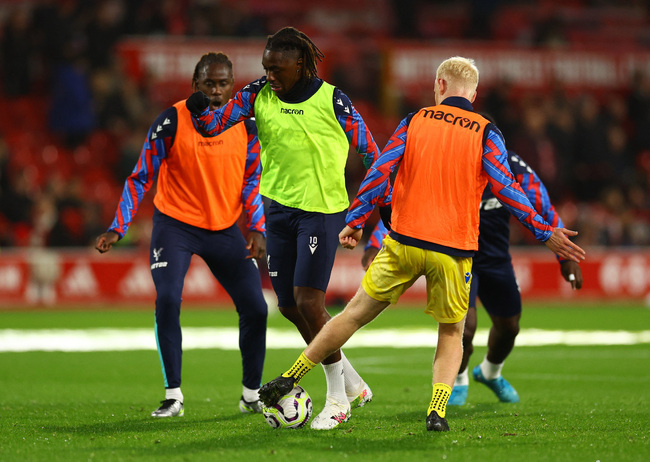Long-term Athletic Rehabilitation
When adolescent athletes sustain serious injuries, they are sidelined for prolonged periods, which results in them struggling to keep up with their peers when they return to sports. Eurico Marques discusses how clinicians play a pivotal role in the athletic development of an adolescent athlete during long-term rehabilitation.
Manchester City’s Jahmai Simpson-Pusey lifts the trophy with teammates after winning the FA Youth Cup Final Action Images via Reuters/Jason Cairnduff.
Serious injury has a devasting effect on adolescent athletes. They lead to prolonged periods of rehabilitation and time away from sports. As physical activity plays a significant role in their holistic development, including emotional, psychological, and physical domains, any considerable time away from sports must be carefully managed(1). Adolescent athletes require particular care when progressing through rehabilitation due to the long-term consequences of injury on their quality of life(2). For example, adolescent athletes who return to sports earlier than nine months after ACL reconstruction are ± seven times more likely to sustain a second ACL injury compared to those who return at nine months or later(3). Interestingly, achieving symmetrical muscle function or quadriceps strength was not associated with the new ACL injury(3). Therefore, prolonged recovery periods may be necessary with adolescent athletes to significantly reduce their re-injury risk, impacting their motor skill development. This poses a problem for clinicians – the longer they are out, the lower the risk of re-injury, but the longer they will spend away from critical motor skill training and sports-specific exposure, which is essential in their long-term athletic development. However, solutions exist, and well-programmed rehabilitation plans offer athletes the hope to mitigate the motor skill deficit consequences of injury.
As with physiological capacity detraining, clinicians must carefully manage motor skill retention and loss. Training age is a common term for an athlete’s capability regarding their training history(4). It is the time accumulated from intermittent and longitudinal participation in training programs and sports(4). Adolescence is a critical period of motor skill development, and prolonged periods of not training will severely impact it. Therefore, holistic rehabilitation programs are crucial to ensuring that skill development is incorporated into recovery.
Developing athletic motor skill competencies is essential for all clinicians in injury rehabilitation. Physiological tissue healing is not enough to protect athletes from re-injury when they return. This is evident in the effect of concussion on re-injury risk. Cognitive, neuromuscular, and neurological impairments affect skill execution and will impact their ability to participate safely(5). Clinicians must acknowledge that while athletes recover from injury, their peers will continue to train and develop their physiological capacities and motor skills. Therefore, when working with adolescent athletes, it is not enough to return them to their pre-injury level. The return to sports (RTS) bar must be moved to match the expected motor skill and age-related physical development expectations. This is particularly evident during peak growth periods (up to 18 years), where they significantly improve all their sports performance capacities. Therefore, hitting the moving target becomes essential for clinicians to ensure adequate rehabilitation.
The dynamic nature of physical and skill maturation means long-term rehabilitation programs require a structured plan to meet the demands(6). Developing muscular strength and motor skills is central to long-term athletic development. However, practitioners must develop these qualities logically and step-by-step(6). Furthermore, the training methods must be age-appropriate and engaging for young athletes to manage the negative psychological consequences of injury and offer the potential to develop a healthy relationship with strength and conditioning(6).
The athletic motor skill competencies (AMSC) are a simple and easy-to-use framework for developing rehabilitation programs (see figure 1)(6). Although created for long-term athletic development (LTAD) of strength and conditioning programming, the AMSC offers medical practitioners the ability to bridge the gap between injury recovery and RTS rehabilitation. It creates a foundation for developing programs that meet the central mission of LTAD - to build solid athletic fundamental movement that enables young athletes to participate in sports effectively, efficiently, and safely(6).
You need to be logged in to continue reading.
Please register for limited access or take a 30-day risk-free trial of Sports Injury Bulletin to experience the full benefits of a subscription. TAKE A RISK-FREE TRIAL
TAKE A RISK-FREE TRIAL
Newsletter Sign Up
Subscriber Testimonials
Dr. Alexandra Fandetti-Robin, Back & Body Chiropractic
Elspeth Cowell MSCh DpodM SRCh HCPC reg
William Hunter, Nuffield Health
Newsletter Sign Up
Coaches Testimonials
Dr. Alexandra Fandetti-Robin, Back & Body Chiropractic
Elspeth Cowell MSCh DpodM SRCh HCPC reg
William Hunter, Nuffield Health
Be at the leading edge of sports injury management
Our international team of qualified experts (see above) spend hours poring over scores of technical journals and medical papers that even the most interested professionals don't have time to read.
For 17 years, we've helped hard-working physiotherapists and sports professionals like you, overwhelmed by the vast amount of new research, bring science to their treatment. Sports Injury Bulletin is the ideal resource for practitioners too busy to cull through all the monthly journals to find meaningful and applicable studies.
*includes 3 coaching manuals
Get Inspired
All the latest techniques and approaches
Sports Injury Bulletin brings together a worldwide panel of experts – including physiotherapists, doctors, researchers and sports scientists. Together we deliver everything you need to help your clients avoid – or recover as quickly as possible from – injuries.
We strip away the scientific jargon and deliver you easy-to-follow training exercises, nutrition tips, psychological strategies and recovery programmes and exercises in plain English.






